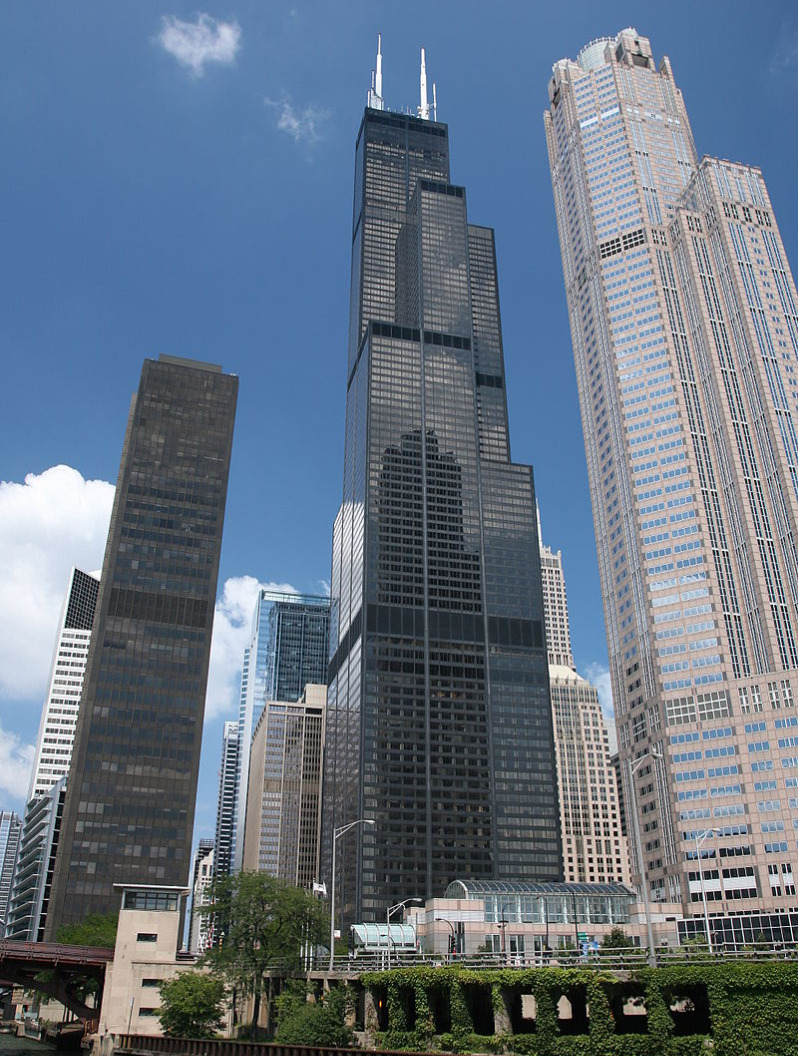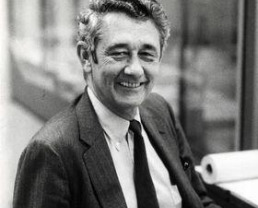Willis Tower
The Willis Tower (also known as Sears Tower, its name for 36 years) is a 110-story, 1,450-foot (442.1 m) skyscraper in Chicago, Illinois. At completion in 1973, it surpassed the World Trade Center in New York City to become the tallest building in the world, a title that it held for nearly 25 years; it was also the tallest building in the Western Hemisphere for 41 years, until the new One World Trade Center surpassed it in 2014.

Architecture and Construction
While it held the title of "Tallest Office Building" until 2014, it lost the title of "Tallest Man-Made Structure" after only 3 years. The CN Tower in Toronto, which serves as a communications tower, took over the title in 1976. The Willis Tower is considered a seminal achievement for architect Fazlur Rahman Khan. It is currently the third-tallest building in the United States and the Western hemisphere – and the 23rd-tallest in the world. Each year, more than one million people visit its observation deck, the highest in the United States, making it one of Chicago's most popular tourist destinations. The structure was renamed in 2009 by the Willis Group as a term of its lease.
As of April 2018, the building's largest tenant is United Airlines, which moved its corporate headquarters from 77 West Wacker Drive (then the United Building) in 2012, occupying around 20 floors. Other major tenants include the building's namesake Willis Group and law firms Schiff Hardin and Seyfarth Shaw. Morgan Stanley plans to move to the building in 2019 and become its fourth-largest tenant by 2020.
Planning and construction
Breakdown of the bundled tube structure of Willis Tower with simplified floor plans
In 1969, Sears, Roebuck & Co. was the largest retailer in the world, with about 350,000 employees. Sears executives decided to consolidate the thousands of employees in offices distributed throughout the Chicago
area into one building on the western edge of Chicago's Loop. Sears asked its outside counsel, Arnstein, Gluck, Weitzenfeld & Minow (now known as Arnstein & Lehr, LLP) to suggest a location. The firm consulted with local and federal authorities and the applicable law, then offered Sears two options: the Goose Island area northwest of downtown, and a two-block area bounded by Franklin Street on the east, Jackson Boulevard on the south, Wacker Drive on the west and Adams Street on the north, with Quincy Street running through the middle from east to west.


About the Architect
Bruce John Graham (December 1, 1925 – March 6, 2010) was a Peruvian-American architect. Graham built buildings all over the world and was deeply involved with evolving the Burnham plan of Chicago. Among his most notable buildings are the Inland Steel Building, the Willis Tower (formerly the Sears Tower), and the John Hancock Center. He was also responsible for planning the Broadgate and Canary Wharf developments in London.
Architectural historian Franz Schulze called him "the Burnham of his generation." He was a 1993 Pew Fellow.
Born on December 1, 1925 in La Cumbre, Valle del Cauca, Colombia, Graham was the son of a Canadian-born father who was an international banker, and a Peruvian mother. His first language was Spanish.
He attended Colegio San Jose de Rio Piedras in Puerto Rico, and graduated in 1944. He studied at the University of Dayton, Ohio, and Structural Engineering at the Case School of Applied Sciences in Cleveland, Ohio.
He graduated from the University of Pennsylvania in 1948 with a degree in Architecture. When he first came to Chicago, he worked for Holabird and Root and joined the Chicago office Skidmore, Owings and Merrill, the largest architectural firm in the United States in 1951.
